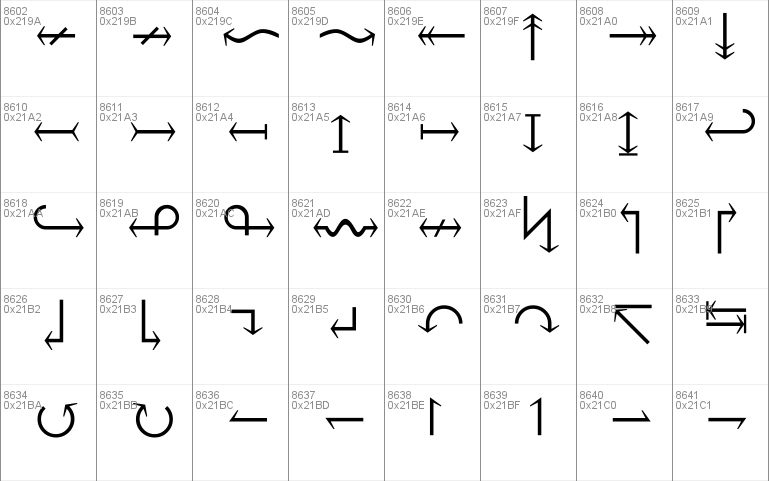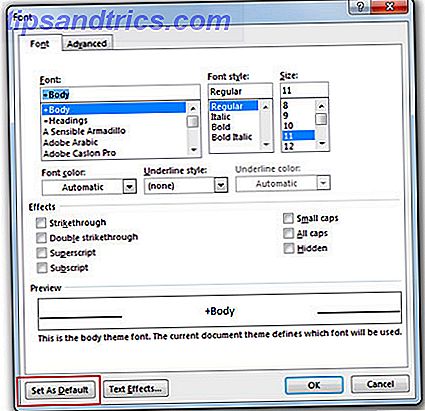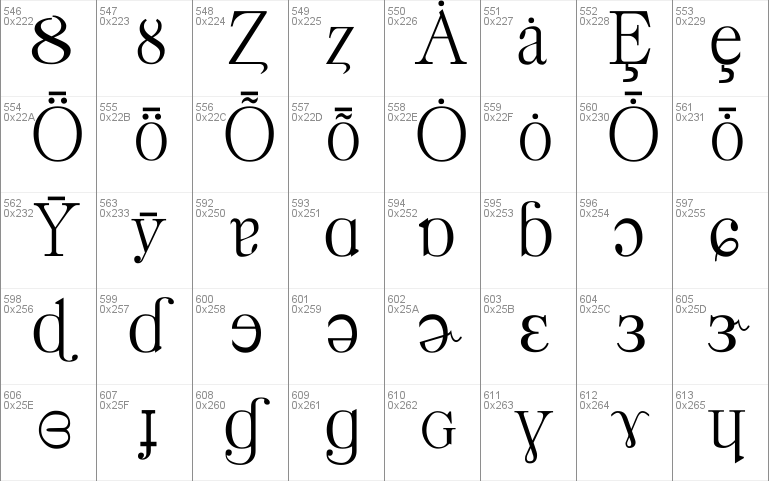Apr 12, 2021 Font pairings: 36 perfect examples. Calvert and Acumin. (Image credit: Robert Slimbach (Adobe Originals) / Monotype) Calvert is a punchy slab serif from Monotype, named after its creator Margaret Calvert. It comes in six styles: Calvert Pro and Standard, each with Light, Regular and Bold variants. Free Adobe Caslon Font. Caslon Font For Word. There are two main kinds of what people tend to call Gothic letters: the German Frakturs and the English Blackletter. The Frakturs have an x that looks like an r with a mysterious disease, and the Blackletters have fiddly bits in the middle like those you see in this Old English Text. Download Caslon Font Microsoft Word Free Most applications (such as Microsoft Word, Excel, and PowerPoint) include fonts that are automatically installed when you install the software. For example, applications that are created especially for document design projects, such as Microsoft Publisher, often come with quite a few extra fonts that you. William Caslon II – born 1720, died 1778 – type founder, type designer. 1742: Joins his father’s company. 1763: Father and son issue the first English book of type specimens, which includes 56 alphabets by Caslon senior and 27 by his son, designed between 1738 and 1763. 1766: After the death of his father, Caslon junior runs the family.
Go to the previous, next chapter.
Why does colonial printing have that ``Colonial' feel?

Colonial type was either very roughly treated by moist salt air on the crossing and in colonial port cities, or was copied locally by tacky techniques (such as driving used foundry type into soft lead to make very soft deformable matrices), and the paper was very rough, which abrades both the serifs and the hairlines. So except for the best work done with new, european types, the serifs were much smaller, even broken off, than the original founder/punchcutter intended. Thins could be abraded by rough paper to nothingness, esp after humid salt air had leached the hardener out of the alloy.
Peter Honig contributes the following alternative explanation of the roughness of colonial types:
The roughness of early fonts was caused by several factors: Type was quite expensive and was used for many years (even if somewhat damaged). Also, printing presses would only be set up to print one side of one folio at a time, so you would not need to set more than a couple of pages at once. This meant that the printer did not need as many copies of each character, however, each character got used very frequently. The early casting techniques did not produce as perfect or consistant examples as we have today. That is, the face of a character might not be quite planar with the page, or its sides might not be quite parallel. Lastly, the inks of the past were not as advanced those of today.
What fonts are good for mock-colonial uses?
For example, what fonts have the following features: old-style figures (non-lining numbers), the long s character, slightly irregular shapes (a la type produced by colonial printers), and a decent complement of ligatures. And what about free or cheap faces like this?
I don't know if any exist with all of 1-5. As I believe you get what you pay for, especially in fonts, I haven't looked at free and cheap-copy fonts.
Microsoft's expansion set for their Win3.1 optional fonts has Garamond Expert & Expert Extensions, which has a good complement of ligatures and I think I remember it having the long ess too. I forget about OSFigs; it should tho'. Monotype's metal faces ``16th Century Roman' and ``Poliphilus' may be available in digital; if so, they imitate early presswork with early and are very close to what one wants.
``A commercial supplier [not yet sampled] is Image Club Graphics in Calgary (1-800-661-9410). It is called Caslon Antique. It is supplied as both roman and italic, together, for $25. They advertise in MacWorld/MacUser/MacBlah. I am unable to tell from abcDEF123 if the numerals are old-style, but I think not. Ligatures? long-S? Not yet known. Guillemots, though, are there. ... Letraset, circa 1977, showing a Caslon Antique with modern numerals, no ligatures, and only UKPounds and German ss extensions.' [Ike Stoddard]
NB: Caslon Antique is not a Caslon per se: ``The last Caslon to mention is that ubiquitous but unrelated Caslon Antique, which possesses no similarity whatsoever to the original. This old reprobate was introduced by Barnhart Brothers of Chicago under the name Fifteenth Century. Its negative reception lasted until about 1918, when, with a simple name change to Caslon Antique, it became the most commonly selected type for reproductions of colonial American printing. It is now seen in everything from liquor advertisments to furniture commercials' [Lawson, 1990,Anatomy]
Miles Agfa (Compugraphic) has always had a Caslon Antique; I don't know if it is available for TrueType or Type 1, but Agfa has been doing TrueType bundles at reasonable prices. [wdr]
Peter Honig contributes the following suggestions:
- Poliphilus A cleaned-up reproduction of type from 1499. It's only slightly irregular and does not contain the long S, but does have old style figures. From Italy, founded by Francesco Griffo.
- Old Claude An exact reproduction of Garamond from 1532. It is irregular and does not contain the long S, but it does have old style figures. From France, founded by Claude Garamond.
- Blado An exact reproduction of type from 1539. It is irregular and does not contain the long S, but it does have old style figures. From Italy, founded by Antinio Blado (designed by Ludovico delgi Arrighi).
- Van Dijck An exact reproduction of type from the 1660s. It is irregular and does not contain the long S, but it does have old style figures. From Holland, founded by Van Dijck.
- Adobe Caslon A cleaned-up reproduction of type from the 1720s. It isn't irregular but it does contain the long S, old style figures, and several ligatures. From England, founded by William Caslon.
Name Year Irreg. Long S OSfig Comment ---- ---- ------ ------ ----- -------
Blado, Poliphilus, and Van Dijck are available from Monotype. Adobe Caslon is available from Adobe. Old Claude is available from Letter Perfect. In my opinion, Old Claude is font that is worthy of close attention. Although it lacks the long S, it is VERY accurately reproduced. Although Adobe Caslon is not irregular, it has a great set of authentic ornaments from the Renaissance and Baroque. It is also the only set that I am aware of, that has the long S and its ligatures.
Font
[Bill Troop notes: I do not believe that Monotype ever had a font called 16th Century Roman. You are thinking of a private face created by Paul Hayden-Duensing for his private press based on old Italian punches. It is very rough indeed, but I can assure you no Colonial printer had a typeface as stylish.
Poliphilus does indeed exist in digital form, and is fairly faithful, but again is far too stylish to give the proper feel of US Colonial printing. Nor is Antique Caslon, so called, anything to do with the Caslon types used by American printers--except those who used this bogus type at the end of the 19th century.
Monotype Bell is a faithful copy of a font that was actually used in the US, but it is far more modern than the Caslon types. Nobody has yet done a really authentic Caslon, and it is a curious fact, but none of the Caslon revivals, in any of metal, photo, or digital formats, has ever been based on the best Caslon sizes. I have been toying with such a revival.
Monotype Van Dijk can hardly be called a faithful copy of a metal font; the outlines are far more regular, for instance, than what Monotype did for Bell. In addition, the less interesting forms of the lower case f and f-ligatures were chosen for the digital version, and the alternate f was not supplied. That makes it a very uninteresting font to use in digital form. In addition, the italic has been unbelievably badly spaced in the digital version. (Harry Carter complained about the spacing in the 13pt Roman in the metal version.)
For anyone wishing to recreate the feel of early-to-mid 18th century printing, a battered, sensitive revival of Caslon would be desirable. The Giampa version is interesting, but is based on a poor model. ]
What fonts could a colonial printer have had?
According to D.B.Updike in the classic reference ``Printing Types: Their History, Forms & Use', he indicates that most colonial work was with types of the Caslon Old Style fonts and cheap copies of same in the 18th C. Before that, it would have been the older Dutch & English faces, almost always lagging English tastes. If you can find the Oxford Fell types, they are classic Dutch-as-used-by-englishmen. Anything with a Dutch moniker and the Oldstyle adjective is probably ok; Van Dijck if you find it, say (died 1673).
Ben Franklin recommended Caslon faces. But these were not available in England before 1720, first full broadside in 1734. Lawson declares that the first printing of the Declaration of Independance was in Caslon.
Wilson's Scotch Modern was the ``modern' font that surfaced in quantity in america. If the Scotch Roman your vendor has is sort-of like-Bodoni but nicer than his Bodoni, that's it. It wasn't available until late 1700s, though.
Excerpted from The comp.fonts FAQ, Copyright © 1992-96 by Norman Walsh
The comp.fonts FAQ, Copyright © 1992-96 by Norman WalshThese are just a few of the most common fonts you will encounter when working with type. Start by looking at all of these and start thinking about how to distinguish them. Each image links to more information.
Times New Roman
This is the most common font on earth. It's a medium weight serif font.
Goudy Oldstyle
Notable for the upward ear of the lower-case g and the shape of the dots.
Adobe Caslon Pro
A newer version of Caslon. Note the 'scooped' top of the A, and the differences in the Q and the ears of the g.
Adobe Jenson
Note the low x-height and the slope of e's bar.
Adobe Garamond Pro
Notice the small bowl of the a and the small eye of the e. Long extenders and top serifs have a downward slope.
Century
A common font for reading textbooks in the early part of the 20th century. Often called Century Schoolbook. Note the looping Q.
Palatino
A very popular font, its calligraphic nature mimics the use of a broad nib pen.
Didot
High contrast between thin and thick strokes, angular and very thin serifs
Bodoni
Another example of extreme contrast between thick and thin strokes, but not quite as extreme as Didot.
Courier
A monospaced, slab serif (rounded), commonly used in screenplays and government work. One of the most common of the truly ugly typefaces.
Copperplate
Distinctive pointy serifs, especially on the numbers.
Helvetica
The most common sans-serif font ever, it's either the pinnacle of typographic design or an abomination of Nature. Opinions vary.
Verdana
Commisioned by Microsoft to work on the web, althought it's often used in print as well. Very common-this page uses Verdana as its body type.
Tahoma

Another Microsoft font, Tahoma is extremely similar to Verdana, but has a narrower body, less generous counters, and tighter letter spacing.
Geneva
Another Helvetica follower, Geneva was developed by Mac, and has rounder bowls, and is lighter than Helvetica. Noet that the tail of the y is much more like Helvitica than Tahoma or Verdana.
Arial
Another font that is similar to Helvetica, but with a straight legged R.
Myriad Pro
Developed by Adobe. Distinct Q.
Century Gothic
Geometric, based on Futura. Note the a and the 1.
Impact
Similar to Haettenschweiler, it's just what it sounds like-a big sturdy font designed for headlines
Eurostyle
Modern and sleek.
Gill Sans
A more old-fashioned sans-serif, with a bit of class and elegance. The g is very different from all the above examples.
Monaco
A mac font that serves as a default for many Snow Leopard functions. Monospaced, and built to distinguish between | and l, and 1, and between 0 and O. Not quite as ugly as Courier.
Bolton
Old fashioned-'recalls a time when everyday objects had grace and charm'.
Yanone Kafeesatz
A truly cool named font, inspired by too much time in coffee shops.
Comic Sans
Most-loved font by people that don't love fonts. Popularized by Beanie Babies.
Chalkboard
The Mac version of Comic Sans. Slightly neater, more vertical, but just as ugly.
Comic Book
A much better alternative. Actually looks like it came from a comic, rather than just being a joke. Unfortunately, no lowercase letters.
Stencil
Just what it sounds like, just what it looks like. Lots of variations on this one.
Bauhaus 93
Named for the famous design school, very dated, but elegant. Other, lighter versions exist.
Brush Script Standard
Self-explanatory, it contains an 'exuberant graphic stroke'.
Edwardian Script
Much fancier than Brush Script.
Lucida Calligraphy
Somewhere between the preceding two examples in terms of fanciness. Developed from Chancery Cursive.
Lucida Blackletter
Caslon Font Microsoft Word 2016
Some people call this style of type 'Old English', or 'Gothic', but both of those terms are used for other things (see the Century Gothic font above), so we'll stick with Blackletter. This is the style of font that Gutenburg used when he printed his first Bible. Very European, very Old Old School.
Caslon Font Microsoft Word Downloads
When you're sure you know all these fonts, try taking the test!